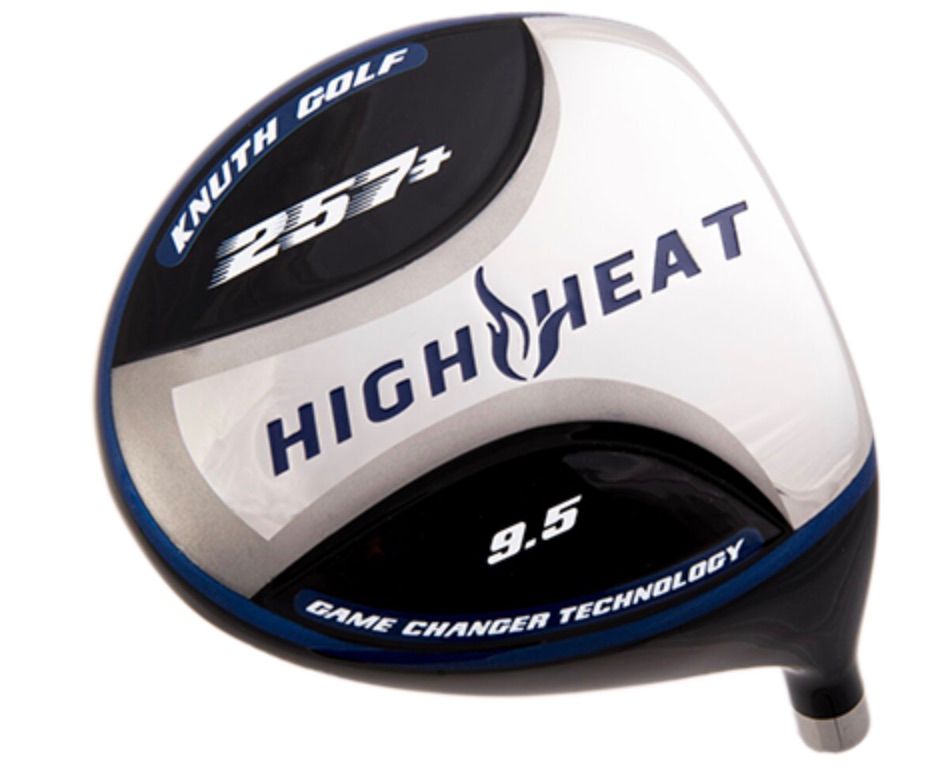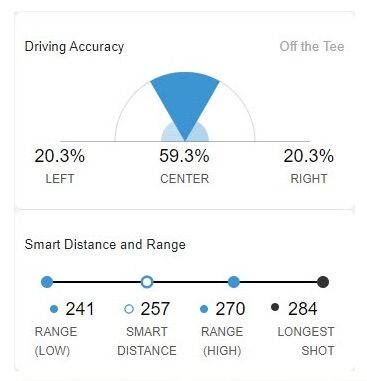
Occasionally every golfer will find themselves falling down the rabbit hole of non-OEM golf clubs sold online, making claims of breakthrough technology. These kinds of clubs have been tested on this site before, generally not living up to the hype. Despite this, I still find myself clicking the Order button on websites every once and a while when the temptation to hit “longer, straighter” shots and “revolutionize” my golf becomes too great. That brings me to the Knuth Golf High Heat 257+ driver; a club claimed by its inventors to optimize amateur golfers’ performance.

Knuth Golf Claims
Knuth produces drivers, fairway metals, and hybrids around the same design feature they claim gives their club ideal performance for amateurs. This design is to take advantage of the 2016 USGA rule modification allowing a “trampoline effect” on the toe and heel of the clubface than the center. The driver’s center has a maximum trampoline effect value of 257; up to 275 is allowed in the toe and heel. Knuth Golf claims to be the only company currently taking advantage of this rule, producing the High Heat 257+ line with high COR values on the toe and heel.

Knuth also designed their driver to give amateurs higher launch by placing the center of gravity (CG) of the club lower and further back in the head. This placement also tends to make drivers more forgiving.
Here is their promotional video:
My Testing
I’d consider myself average off the tee for my handicap, producing distance and accuracy numbers right in line with the statistical norms. My swing speed sits in the center of the curve and around 100-105mph during regular play. I use a modern, major brand driver with all the technology features familiar today. So could the High Heat 257+ driver beat it and find a place in my bag? I ordered one to find out.
I ordered the club in 10.5* and a stiff shaft, the same as my current club. It’s important to note that the High Heat is not adjustable, so the specs you buy is what you are stuck with. The driver came stock with a Fujikura Pro 63 shaft and Lamkin grip, respected name brands in their areas.
The driver itself has a different look than most anything on the market today, with a near-mirror finish on the clubface, bold graphics on the sole, and a glossy crown. The sole also stood out to me as being a lot flatter than most others I’ve seen. The Knuth High Heat has a similar look to most other ultra-forgiving drivers, broad face and deep behind the ball. While unbiased reviews of the club seemed hard to come by, most mentioned the loud sound at impact. One review going as far as to say, “every tester loved the sound almost as much as the club itself.” Given this, I thought I was prepared for the noise at impact, but I wasn’t.
My first hit with the High Heat 257+ was on my home course’s second hole during an early morning round. I made a decent swing, nothing special, but at impact, it was the loudest sound I have ever heard from a golf club. It wasn’t a thump or a thud, but an unsuppressed ringing noise that seemed to echo across the course and louder than the promo videos. I know impact noise is subjective, but I’m confident that very few golfers out there will legitimately like the sound. It will undoubtedly get many dirty looks if you start hitting it out on a busy range. In all honesty, that one hit (even with a decent result) told me that I wouldn’t have this club in my bag. In the interest of a complete review, though, I hit it a few more times to collect more distance and accuracy data.
Results
Here are my driving statistics with my current driver from Arccos to serve as a baseline:


In comparison, here are my statistics with the Knuth High Heat Driver:

Five drives isn't really a significant sample size, but in the end, I think they told me what I needed to know. The Knuth Golf High Heat 257+ driver hit the ball okay. The distance and dispersion weren’t all that different than my regular gamer. If hits off the sweet spot benefited from the higher trampoline effect, it wasn’t noticeable.
I admit that this is far from a thorough test. Ideally, I would test the High Heat with a launch monitor (preferably in a soundproof room), but lacking that, the club’s bottom line is that it is unbearably loud. Maybe it would be different if I had seen a hint of the performance promises in my limited testing, but I didn’t.
Final Thoughts
Looking back, I think something is telling that no other manufacturers are taking advantage of the 2016 rule change, allowing high COR values on the driver's toe and heel. The rule is not a secret, nor is it a secret that average golfers struggle to hit the center of the clubface, so why haven’t any of the big brands produced a driver like this for themselves?
While this is a guess, I think they’ve tested it and didn’t find enough performance improvement to overcome the aesthetic problems it creates, especially for sound. This is a significant consideration for club designers these days, especially for drivers, as golfers will base a lot of their “feel” for a club during testing on what they hear. This is a consideration that the online-hype clubs don’t have to worry about. No one is testing them out at a store or a fitter before buying it, leading to ear-splitting results.
We care about the protection of your data Read our Privacy Policy